
chuck
-
Posts
248 -
Joined
-
Last visited
-
Days Won
1
Content Type
Profiles
Forums
Blogs
Gallery
Events
Store
Posts posted by chuck
-
-
Gentlemen,
Why would the swords be mounted upside down if the chain was put together in a Saxon town?
Regards,
Chuck
0 -
Nice bar, and i cannot understand why the suspension ring for the Baden medal was so large?
regards,
Chuck
0 -
-
Very nice and valuable record of what companies sold.
chuck
0 -
I wanted to take a moment and clarify the source of this discussion. The announcement for the "Vor dem Feinde" bar was published in the Oldenburg newspaper Nachrichten fur Stadt und Land on 02 October 1918 Nr 269 (see attached front page clip). I have gone back and reviewed the newspaper from the institution date of 20 SEP18 until the date of the announcement 02Oct18 and could not find any additional announcements or mentions of the "Vor dem Feinde" bar. Typically, there was at least one announcement Titled from the Grand Duke" "Aus dem Grossherzogtum" published each day listing various promotions, awards, and other items presented or about the officers and men of Oldenburg military.
The Nachrichenten fur Stadt und Land according to the German Wiki was first published fin 1867 and was a major regional paper around the time of the 1st World War with a circulation of about 30,000 copies.
Given these facts i would deduce that announcement served as general implementation instructions for the citizens of Oldenburg on the newly established Vor dem Feinde bar for the already existing Friedrich August Cross 2nd Class on the combat ribbon.
As i am not fluent in German it is possible i have made errors.
Regards
Chuck
0 -
10 hours ago, GreyC said:
That is not what it says in German.
Unfortunately Chuck gave no year to the clipping. My guess is 1918.
What it says in German (translated to English) is that all those who where awarded the cross before this announcement and who are elligble for the bar, can obtain it at own cost. Only with newly awarded crosses from announcement onwards, is the bar included (when bearer elligable).
GreyC
The newspaper is Oldenburg Zeitungfur Volk und Heimet, dated 02OCT1918, Nr269.
Chuck
0 -
Gentlemen,
A fellow GMIC member Triadoro provided me a translation to the announcement dated 02Oct1918 of the Vor dem Feinde bar from a local Oldenburg newspaper that is different from the commonly stated wisdom that the bar was only for private purchase, and not awarded.
"You've presented an extremely important document that sheds considerable light on the award criteria for the "Vor dem Feinde" ribbon-clasp. It is nothing short of an official announcement clarifying the purpose of this clasp and the circumstances under which it was to be awarded and worn.
There is quite a bit of misinformation circulating about the "Vor dem Feinde" clasp. Some posts in this forum (some even recently!) have suggested that recipients of the Friedrich August Cross 2nd Class privately purchased these clasps at their discretion and mounted them on their medal bars and ribbon bars as a decorative embelishment.
However, the announcement you've posted clearly states, that the Grand Duke himself instituted this clasp in order to specifically recognize meritorious combat-service on the front lines by recipients of the FA-Cross 2nd Class.
It continues by stating that recipients of the FA-Cross 2nd Class who received this award for service in the rear echelon, in occupied enemy territories, or in the German Homeland are NOT authorized to wear this clasp. (Note that these 3 categories of recipients also received the FA-Cross on War Ribbon, not on the Non-Combatant Ribbon.)"
Furthermore, the announcement states that the clasp would be awarded along with the FA-Cross 2nd Class to frontline combatants... i.e, not separately, but together WITH the FA-Cross. However, if somebody who already has an FA-Cross 2nd Class without a clasp gets transferred to frontline combat service, it was up to that individual to obtain a clasp entirely on his own. There would be no separate award certificate for the clasp issued nor would a complimentary clasp be provided. (It is for this reason that we see retailers of military products offering these clasps on a private-purchase basis, especially after the War.)
Thank You,
Chuck
1 -
On 05/07/2022 at 17:29, Triadoro said:
You've presented an extremely important document that sheds considerable light on the award criteria for the "Vor dem Feinde" ribbon-clasp. It is nothing short of an official announcement clarifying the purpose of this clasp and the circumstances under which it was to be awarded and worn.
There is quite a bit of misinformation circulating about the "Vor dem Feinde" clasp. Some posts in this forum (some even recently!) have suggested that recipients of the Friedrich August Cross 2nd Class privately purchased these clasps at their discretion and mounted them on their medal bars and ribbon bars as a decorative embelishment.
However, the announcement you've posted clearly states, that the Grand Duke himself instituted this clasp in order to specifically recognize meritorious combat-service on the front lines by recipients of the FA-Cross 2nd Class.
It continues by stating that recipients of the FA-Cross 2nd Class who received this award for service in the rear echelon, in occupied enemy territories, or in the German Homeland are NOT authorized to wear this clasp. (Note that these 3 categories of recipients also received the FA-Cross on War Ribbon, not on the Non-Combatant Ribbon.)
Furthermore, the announcement states that the clasp would be awarded along with the FA-Cross 2nd Class to frontline combatants... i.e, not separately, but together WITH the FA-Cross. However, if somebody who already has an FA-Cross 2nd Class without a clasp gets transferred to frontline combat service, it was up to that individual to obtain a clasp entirely on his own. There would be no separate award certificate for the clasp issued nor would a complimentary clasp be provided. (It is for this reason that we see retailers of military products offering these clasps on a private-purchase basis, especially after the War.)
.
Triadoro,
I was having a discussion on the imperial award forum which led me to look for additional information and stumbled on to the announcement in the Deutsche Zeigensportal.
Deutsches Zeitungsportal - Deutsche Digitale Bibliothek (deutsche-digitale-bibliothek.de)
Thanks,
chuck
0 -
-
22 hours ago, Dave Danner said:
Awards for merit on the battlefront from 20 September 1918 (the date the clasp was authorized) on would be with the clasp. If one already had the cross for merit on the battlefront, your memory serves you right: it was up to the individual to obtain the clasp himself. From the Großherzogliche Militärkanzlei:
"Eine Nachlieferung der Spange für Verdienste in der Kampffront findet nicht statt, es bleibt dem einzelnen überlassen, sich diese selbst zu beschaffen."
Neal O'Connor Volume VI on Oldenburg quotes the same information of individuals being required to purchase the bar. I found it interesting in that the spangen appeared fairly quickly for sale in the stores in Oldenburg. This advertisement from Otto Hallerstede was only 30 days after the approval date.
Regards,
Chuck
0 -
On 01/01/2021 at 13:18, 91-old-inf-reg said:
The Miniature is a very nice find. I recently came across an advertisement for the New! Spangen for the Friedrich August Cross from what i believe must have been a sales company.
Regards,
Chuck
2 -
On 23/06/2022 at 15:19, Dave Danner said:
A really informative roll-up of information that i had not seen previously and explains how the autonomy of the various states.
regards,
chuck
On 23/06/2022 at 15:19, Dave Danner said:Notwithstanding this, awards continued to be made. Possibly because they were Imperial to the bone, many officers did not really care what a bunch of politicians in Weimar thought of their traditions. And awards continued to be made with official sanction. The Reichswehr stopped accepting new recommendations for war awards around 1920, but continued to process existing recommendations, and there was still an exception for returning prisoners of war. For Prussia, this was limited to general awards (e.g., EK1&2, Verdienstkreuz für Kriegshilfe, Rote-Kreuz-Medaille, Dienstauszeichnung), rather than knightly orders associated with the old monarchy, like the House Order of Hohenzollern. But other states had different practices.
Saxony: the Heeresabwicklungsamt Sachsen processed award recommendations for Saxon war decorations, including knightly orders. For example, Erich von Loßnitzer was awarded his Militär-St.-Heinrichs-Orden on 21.1.1920. Like Fritsch, Hptm.d.R. Ernst Seydel, Hptm.d.R. Walter Eichler, and OLt. Heinrich Gerlach were awarded the SA3aX on 18.6.1920. On the same date, the SA3bX was awarded to Lt.d.R. Rudolf Berger, Lt.d.L. Rudolf Böhmer, Lt.d.R. Wolfgang von Boetticher and Lt.d.R. Alfred Johnson, and the Verdienstkreuz mit Schwertern was awarded to Proviantamtsinspektor Richard Engst. From the Schutztruppe für Kamerun, Lt.d.L. Johannes Gläser and Lt.d.R. Richard Wolf received the SA3bX on 1.9.1920 and Stabsveterinär Dr. Ernst Artur Gottschalk received the SA3aX on 19.10.1920.
Bavaria: The Heeresabwicklungsamt Bayern announced that it would stop processing Vorschläge for most military decorations on 31.5.1920, with 30.6.1920 being the Abschlußtermin for the Militär-Max-Joseph-Orden and the Militär-Sanitäts-Orden. Only prisoners of war returning after those dates could still be considered for awards, and then the proposal had to be made within 2 months after their return. Awards were still being gazetted in the Verordnungsblatt in December 1920. These included the Militär-Verdienstorden, the Militär-Verdienstkreuz, the Tapferkeitsmedaillen and the Verdienstkreuz für freiwilligen Krenkenpflege.
Württemberg I am not sure about. The Heeresabwicklungsamt Württemberg did have an office for Ordensangelegenheiten. I have seen some post-war award recommendations denied, but I do know of post-war awards. For exampe, the later-Generalmajor Hermann Harttmann from the Schutztruppe für Kamerun was awarded the WM3 in January 1920, although he had been nominated in 1917.
Mecklenburg-Schwerin continued to award the Militärverdienstkreuz into the 1920s. The last known award of the Mecklenburg-Strelitzsches Kreuz für Auszeichnung im Kriege was in January 1924.
Awards of the Friedrich-August-Kreuz were made by the Oldenburg Militärkanzlei through at least 1920. I have seen mid-1920s correspondence in a Wehrmacht personnel file from the former Flügeladjutant to the Großherzog regretting that no one was left to approve an award, but telling the officer in question he should consider himself as having earned the award.
The Sachsen-Weimar Hausorden der Wachsamkeit oder vom Weißen Falken was awarded with swords into 1920. As a Hausorden, technically it could still be awarded even after that point, although without any official sanction.The final award of the Schaumburg-Lippisches Kreuz für Treue Dienste 1914 was made in 1923.
The final official awards of the Lippisches Kriegsverdienstkreuz were made in 1922 and the last award of the Kriegsehrenkreuze für heldenmütige Tat was made in 1921. Since it was a Hausorden, the Ehrenkreuz continued to be awarded, even with swords after that point. Several Wehrmacht officers had late awards of Kriegsverdienstkreuz and Ehrenkreuz mit Schwertern, although in most cases these were backdated to November 1918.
The Bremisches Hanseatenkreuz was awarded into 1923. The Haumburgisches Hanseatenkreuz was awarded into at least 1922. The Lübecksches Hanseatenkreuz was awarded into 1921.
The Saxon duchies are an odd case. Awards of the Ernestinischer Hausorden with swords continued to be made into the 1930s at least, and the Reichswehr's and Wehrmacht's attitude toward them varied from time to time. Other awards of war decorations were also made after the war. Major a.D. Heinrich von Hanstein, for example, was awarded the Carl-Eduard-Kriegskreuz and the EH3aX in 1928.
Anhalt and Schwarzburg stopped processing awards with the abdications in November 1918. Other stated I am less certain about. I have not come across any post-1918 awards from Baden, Hessen or Braunschweig, but I cannot say for certain there were none.
0 -
-
Yes but no pretty pictures?
0 -
Good article on the subject, and also has the original medal bar.
Saxon Albert Order with Swords on Ring (medalnet.net)
Regards,
Chuck
0 -
-
Several names can be found in this link to a book on the 2nd Sea Battalion in China 1900-1901 who were award the Militar-Ehrenzeichen 2nd Klasse.
Regards,
Chuck
1 -
Gentlemen,
My first attempt at a translation of old German script. Corrections are most welcome from the forum welcome.
Who Invented the Wound Badge?
For months the management of the "UM" has been trying to follow the original idea of the German wounded badge. Unfortunately, the officials of the former Prussian Ministry of War still give the files of the military department in Aufichluiz (clothing department?) about who presented the wounded badge during the world war.
We were lucky by chance
One day a customer sold a wounded badge in a Berlin suburb, and in the trades quarter each customer asked casually:
"Do you also know, Herr Wels, that this wounded badge was made?"The owner of the Geichaf didn't say it, but he was happy to tell me and said: That belongs in a trade journal, in the "Uniform Market."
The "UM" connected with the gentlemen in question. It is Mr. Paul Krecklow in Throm, district of Teltow.----- our first meeting ----- Mr. Krecklow handed over a very extensive manuscript for naming, his war experience:
Paul Krecklow, born in 1893, belonged to the "Storm Grenadiers" in the World War I, the Army Storm Battalion, which particularly often faced death, and currently the 1st Company Storm Battalion 2 v. Grave. When the battalion was founded, Krecklow, who had previously served with the Zehr Infantry Regiment, had volunteered. On the wide front and in Italy, the battalion was deployed to the burning atmosphere of the battles.In his war memoirs, which were described and unfortunately not yet printed, Krecklow had already written the Abichuitt "How the Wound Badge was Made". But we wanted to be more specific about the facts of the matter, and so we made an appointment again with Mr. Krecklow for Thursday of last week.
If you were wounded," Mr. Krecklow said, "and after recovering to ----- a new regiment, you ----- were regarded as a 'Reuling'. I was therefore excited by the thought of finding a symbol that identified the front-line sampler, who had already been wounded, as such. I'm thinking about it in the base quarters, and I hastily drew a sketch showing a steel helmet surrounded by oak leaves with swords drawn. I formulated the proposal to issue a black
wound badge for one or two wounds, a silver one for three or four wounds, and a gold wound badge for five or more wounds.I was wounded three times then. As a Berliner, I knew the Godet firm in Charlotten street, Berlin. Then, in the late summer of 1917, I received my draft (a kind of difficult sketch) with explanations, and I asked the company to forward the proposal to the relevant authority. Then one day I was donated to the clerk Karl Sunnemann (today mayor of the city of Oldensdorf, district of Holzminden) from the company bureau to Sergeant Lautenichsager (unfortunately I haven't found his address yet). I was told that I had contacted an authority without
following the official channels, and I was handed a letter from the internal department of the Breutz War Ministry to read, which had roughly the following content: "The proposal for the creation of the wounded badge has also been accepted; it has been forwarded." The letter ends with a Dance. In the Anichlutz, I was once again thrown into a conversation about this matter by the company commander, Oberleutnant Kuhnow - now Major (E) in Berlin. - on this subject. - The wounded badge was donated by AKO on March 3rd, 1918."Paul Krecklow has been duly discharged from military service. In business relations he had to overcome difficulties because of his national sentiment. After his commercial existence he was unemployed for years because of his righteous national sentiment. He made his way through life faithfully and well-behaved: He worked on construction sites, delivered bathroom goods for a long time, was an extra in films, helped build the Reich autobahn and today is a material distributor at Daimler-Benz A.G. - In the spring of 1918 he lost the matt white wounded badge.
We are also happy to talk about this remarkable suggestion for the creation of a German Wound Badge because we have not yet shed any light on the preliminary question so far back. After all, a duplication of the idea is also conceivable. In any case, Paul Krecklow has a share in the idea, especially since his preliminary report corresponded exactly to the previous version, and it would be desirable for the history of the wounded badge to be reproduced completely so that it can be documented in the army archives.
Regards,
Chuck
0 -
Hi Gordon,
I had a question specifically on World War 1 wound badge maker markings. I have seen a few badges from companies such as 4 Steinhauer und Luck, Ludenscheid, L/54 Schauerte & Hohfeld, Ludenscheid & L/56 Funcke & Bruningshaus. Do you know of any official of compiled information of what companies manufactured World War 1 wound badges during the Third Reich time frame when LDO marking were instituted?
Regards,
On 30/04/2005 at 11:45, Gordon Williamson said:On the subject of the actual markings themselves, during the Third Reich period anyone who had lost their award could obtain a free "official" replacement through the Pr?sidialkanzlei, purchase an additional piece "officially" or buy one at their own expense via the LDO retail outlets, ( these LDO marked pieces were in the terminology of the time referred to as Copies , Replicas or Restrikes).
Note that this facility to obtain official replacements does not just relate to awards instituted during the Third Reich. A soldier for example, who possessed the 1914 Iron Cross First Class and lost or had his award damaged, could obtain an official replacement, and this would be appropriately marked with a Pr?sidialkanzlei Lieferant number, such as "4" for Steinhauer.
If he elected to purchase his own privately just because he wanted an extra example, it would be marked with the LDO number.
How many recipients would wish to pay for an over the counter copy when they could obtain an official relacement free? LDO pieces were considered restrikes, copies or replicas, not proper awards. Original period manufacturers catalogues attest to this
As far as dual marked crosses are concerned, as the LDO marks predate the Pr?sidialkanzlei marks, it is likely that these were initially LDO marked then had the PK number added when they were used to complete an order from the Pr?sidialkanzlei.
Attached is a declaration relating to LDO markings from a 1941 Steinhauer catalogue. Note the reference to the L-16 LDO number being used on "Nachbildungen" (i.e. Copies or Reproductions)
In 1941 the retail sale of high grade decorations such as the Knights Cross and above was forbidden. Retailers were allowed to retain only display samples and all others had to be handed in to the Ordenskanzlei, the manufacturers being compensated appropriately. These LDO marked pieces ( like Juncker L/12 Knight's Crosses, L/50 marked Godet Oakleaves etc) were subsequently used as official award pieces.
There is no evidence that any lower grade LDO marked pieces such as War Badges, EK1s, KVKs etc were ever used as formal award pieces.
0 -
Just to clarify my comment those figures were quoted for the 1st World War period only.
10 hours ago, saschaw said:I'm not sure if the given numbers are complete, but it's certainly true that in WW1, when these classes were usually not awarded, they were sometimes used as a "leaving present". Foreign recipients seem to be another topic though, which is documented by this Bulgarian officer's group.
0 -
Hi Saschaw,
Thank you for the reply.
Regards,
Chuck
1 hour ago, saschaw said:From what I have heard, this book does not bear to today's standards. However, I'm not aware of any other book on the topic. A major German collector I think might be working on a book, but is far from publishing it. For now, we're probably best reading threads and discussing pieces here and on similar platforms...
 0
0 -
Hi Sachaw,
I had also previously read in Neal O'Conner books Aviation Awards of Imperial Germany that the third, and fourth class Red Eagle (116 awards) and Crown Order (54 awards) were given out as retirement type awards for over the hill German Officers. Unfortunately, he also did not mention any of the German allies.
Regards,
Chuck
0 -
-
Nice group for an Austrian NCO. I have previously read on the GMIC forum there were 7, 123 awards to Austrians.
Regards,
Chuck
1


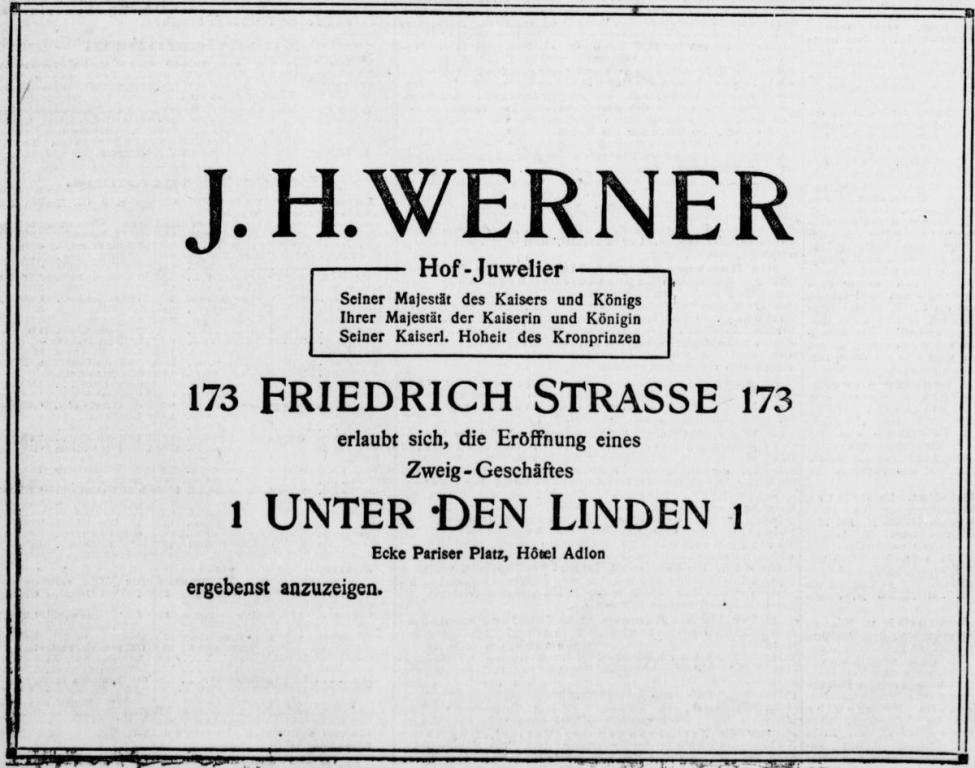
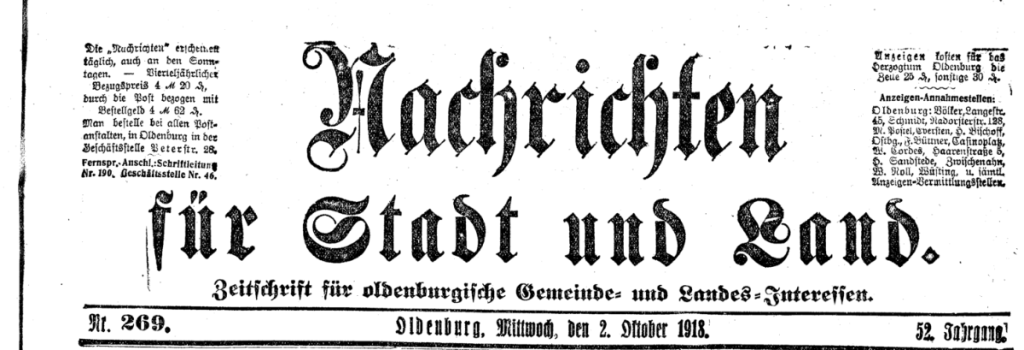
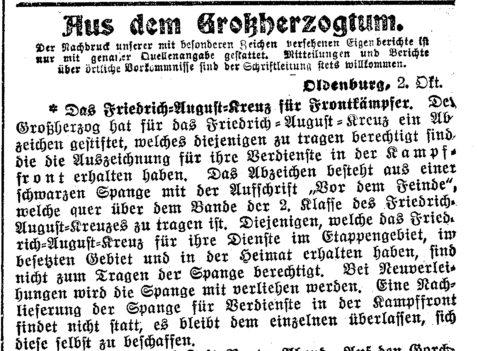
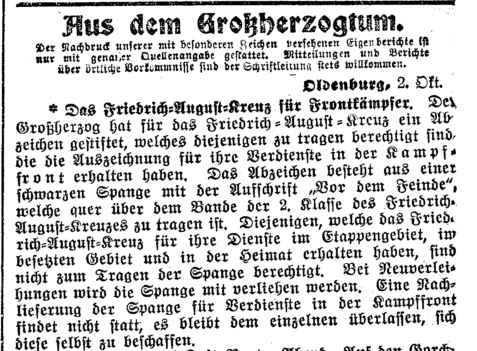

.thumb.jpg.6398ab9b3542b4c4b9b2844a9bff5490.jpg)
.thumb.jpg.3244b8b23deb59611e96345fecb0838e.jpg)
.thumb.jpg.623813e310c73d9aa2dfbd83b02b1273.jpg)
.thumb.jpg.ded41ec65be9946a49be3b36c2cba252.jpg)
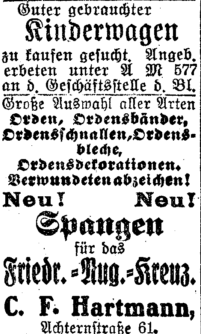
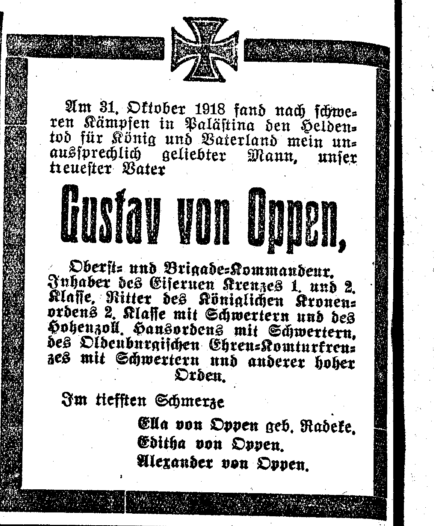

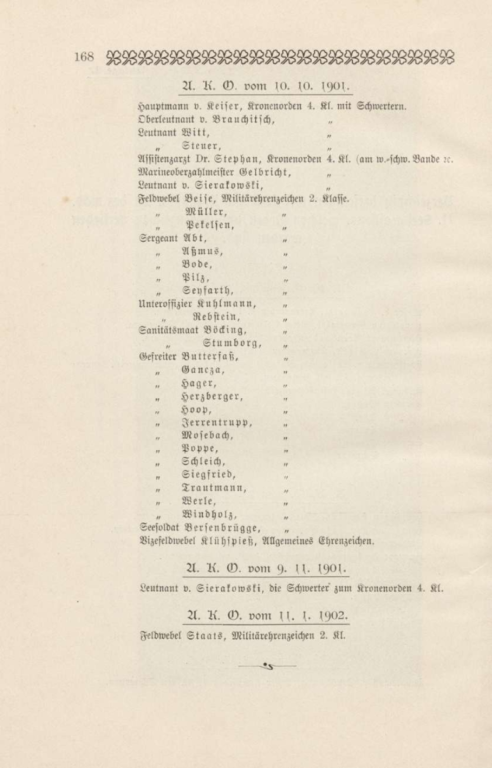
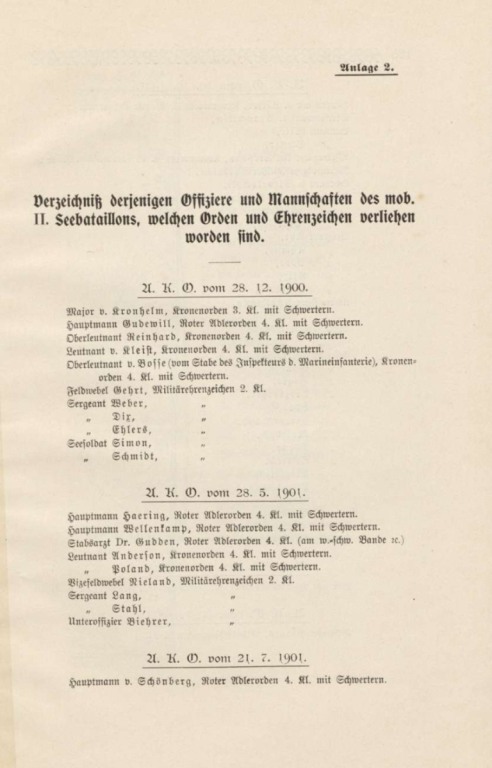
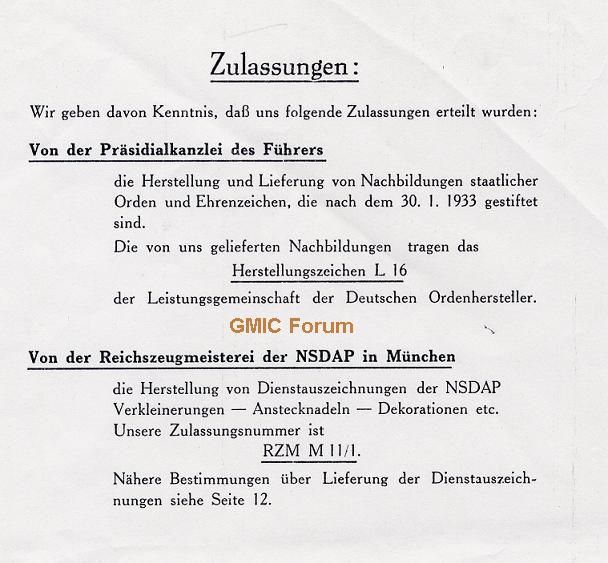
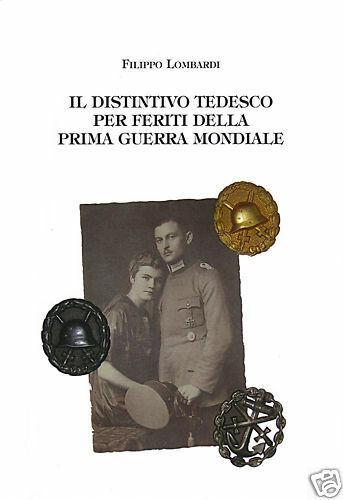
Militärverdienstkreuz 2.Kl / 3.Kl… Help needed
in Germany: Imperial: The Orders, Decorations and Medals of The Imperial German States
Posted
very nice collection.
Regards,
chuck